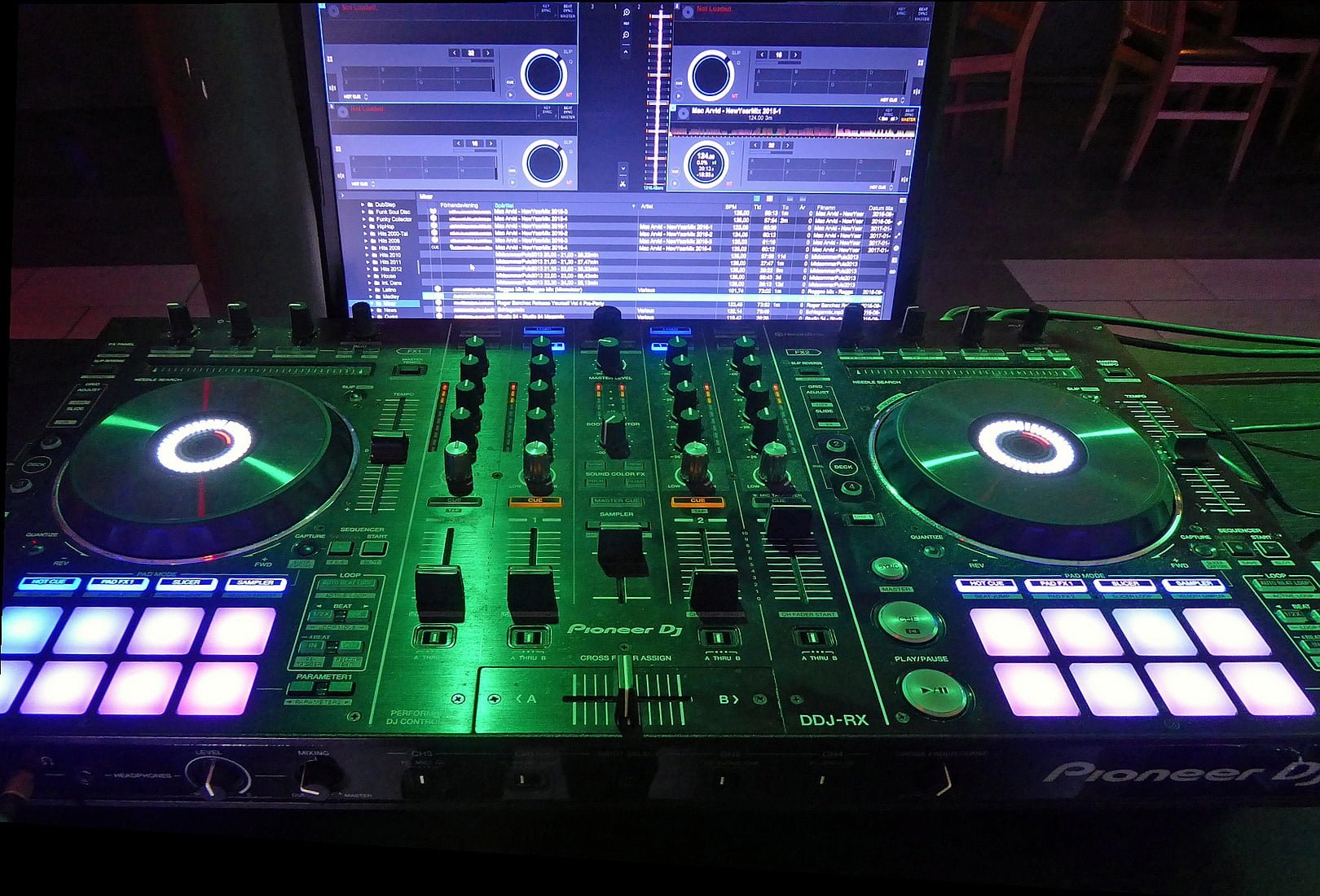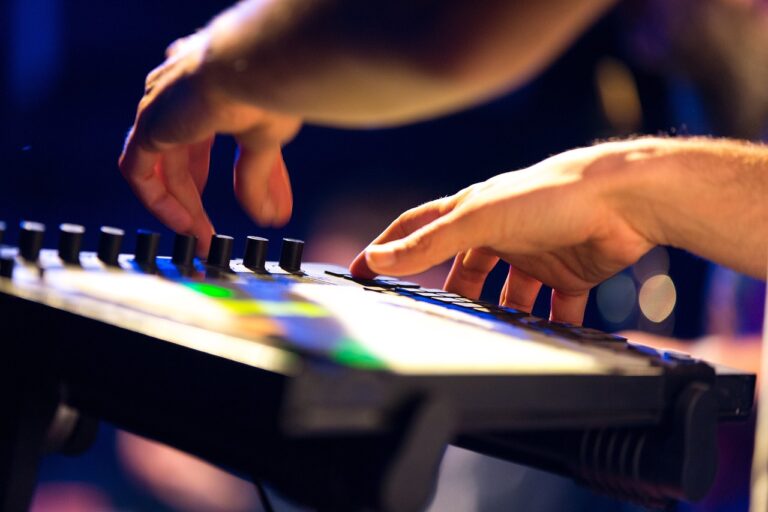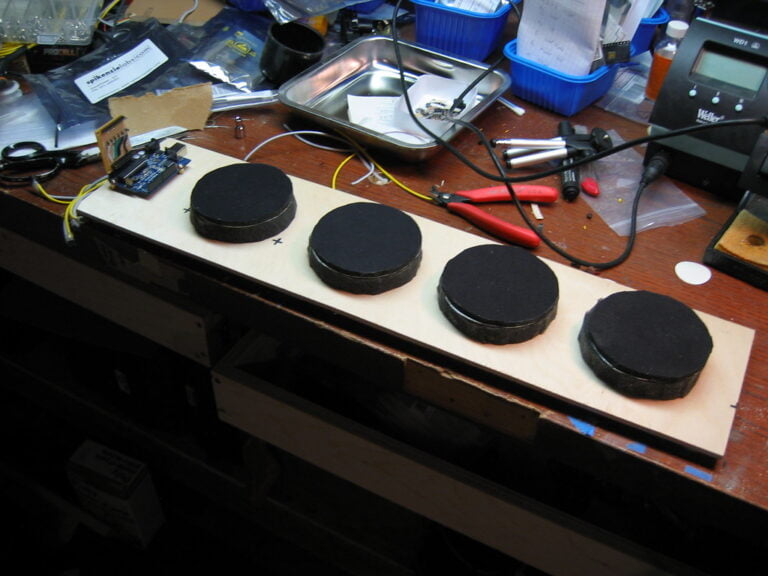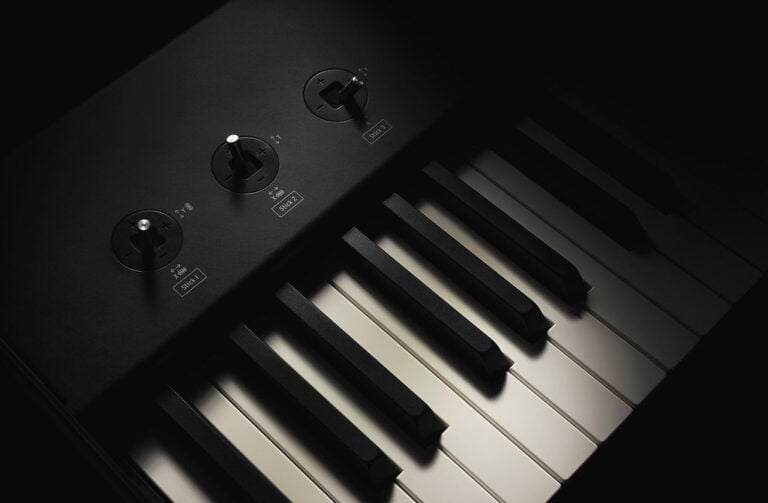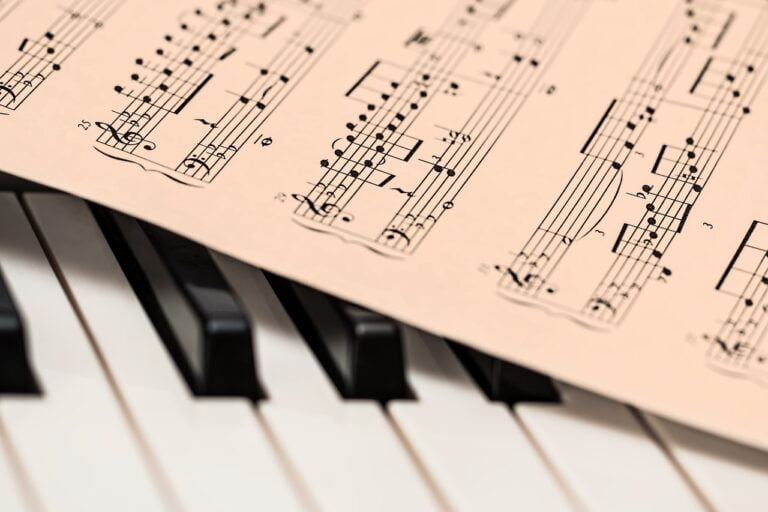MIDI Controller for DJing: Navigating the World of DJ MIDI Controllers
Exploring the world of DJ MIDI controllers involves grasping essential features like jog wheels, faders, and buttons that facilitate interaction with DJ software. High-resolution jog wheels enhance scratching and beatmatching, while specialized controls for effects and looping elevate creativity during sets. It is vital to prioritize software compatibility, sturdy construction, and ergonomic design for a seamless DJing experience. Each controller offers unique pros and cons, requiring thorough research to make an informed decision. Delving further into software integration, customization tips, and advanced performance techniques will help optimize your DJ setup efficiently.
We are supported by our audience. When you purchase through links on our site, we may earn an affiliate commission, at no extra cost for you. Learn more.
Understanding DJ MIDI Controller Basics
When using DJ MIDI controllers, it is important to grasp the fundamental functions and components that form the backbone of these versatile tools. A DJ controller is a hardware device that allows DJs to interact with DJ software using tactile controls like jog wheels, faders, knobs, and buttons. MIDI, which stands for Musical Instrument Digital Interface, is the language that these controllers use to communicate with the DJ software. This communication enables DJs to manipulate tracks, trigger samples, apply effects, and more within the software environment.
The software aspect is vital as well. DJ MIDI controllers are designed to work seamlessly with software such as Ableton Live, Traktor Pro 3, and other popular DJ applications. These controllers serve as a bridge between the physical world of knobs and faders and the digital domain of music files and effects. The control surface of a DJ MIDI controller is where all the action happens. It’s where DJs perform their magic, adjusting tempo, cue points, volume levels, and more in real-time.
One of the key components of a DJ MIDI controller is the jog wheel. This wheel allows DJs to scratch, nudge, and pitch bend tracks just like they would on traditional vinyl turntables. The jog wheel’s sensitivity and responsiveness are essential for a DJ to perform smooth shifts and creative mixing techniques. Understanding these basic functions and components is essential for mastering the art of DJing with MIDI controllers.
Key Features to Look For
What are the key features that one should look for in DJ MIDI controllers? When selecting a DJ controller, it is vital to contemplate the presence of jog wheels, faders, and buttons as essential components for seamless mixing and control. High-resolution jog wheels are particularly desirable for precise scratching and beatmatching, enhancing the overall performance experience. Additionally, controllers with dedicated effects and looping controls can elevate your creativity during sets, allowing for dynamic and engaging performances.
Moreover, confirming compatibility with your preferred DJ software is paramount. This compatibility ensures smooth integration and workflow efficiency, enabling you to leverage the full capabilities of your controller within your chosen software environment. Sturdy construction and ergonomic design are also key factors to prioritize when choosing a DJ MIDI controller. A robust build quality will withstand the rigors of live performance, while an ergonomic design will promote comfort during extended sets, reducing fatigue and enhancing overall performance quality.
Exploring Software Compatibility
How can DJ MIDI controllers be optimized for seamless integration with a variety of software platforms? When exploring software compatibility for DJ MIDI controllers, it’s vital to take into account the specific DJ software you plan to use, such as Traktor, Ableton Live, Virtual DJ, or Serato DJ Pro. To guarantee smooth operation, MIDI controllers need to be compatible with these software platforms through MIDI mapping capabilities. MIDI mapping allows you to personalize the functions of your MIDI controller to manage various parameters within the software, including effects, loops, and mixing controls.
Each software platform may have its own requirements for MIDI mappings, so it’s important to research and understand these specifications to maximize the performance and functionality of your MIDI controller. Choosing a MIDI controller that is compatible with your preferred DJ software ensures that you can seamlessly integrate the hardware with the software for a streamlined DJing experience. Additionally, considering software compatibility when selecting a MIDI controller enables you to take advantage of features like audio recording, further enhancing your capabilities as a DJ. By prioritizing software compatibility in your setup, you can create a tailored and efficient DJing environment that suits your specific needs and preferences.
Tips for Customizing Your Setup
To enhance the efficiency and control of your DJ performances, consider customizing your MIDI controller setup by mapping specific functions to knobs, sliders, and pads. Utilizing MIDI mapping software allows you to assign commands to various controls on your MIDI controller, tailoring them to your unique DJing style. Experimenting with different MIDI controller layouts can help you find the most intuitive and efficient setup for your performances.
When customizing your setup, it’s beneficial to explore pre-configured MIDI maps for popular DJ software. These pre-made mappings can speed up the customization process and guarantee compatibility with your setup, saving you time and effort in the long run. By taking advantage of the flexibility offered by MIDI controllers, you can create a personalized and responsive DJ setup that enhances your overall performance.
Remember that customizing your MIDI controller setup is a process of trial and error. Don’t be afraid to experiment with different mappings and configurations until you find the setup that works best for you. With a personalized setup, you can streamline your workflow, improve your control over the music, and elevate your DJ performances to new heights.
Pros and Cons of Different Models
Different models of DJ MIDI controllers offer a range of features such as jog wheels, faders, and buttons for enhanced control during performances. Some controllers, like those from Native Instruments, provide motorized vinyl for a more vital feel, mimicking traditional DJ setups. This feature can enhance the overall control and responsiveness of the controller, giving DJs a more authentic experience. Velocity-sensitive trigger pads are another advantage found in certain models. These pads allow for dynamic sound manipulation, enabling DJs to create expressive performances by adjusting the sound based on the pressure applied to the pads.
On the flip side, some models come with cons that should be considered. One common downside is the higher price point associated with professional-grade controllers that offer advanced features. While these controllers may provide superior sound control and durability, they can be a significant investment. Additionally, compatibility issues with specific DJ software can be a drawback for some models. DJs need to verify that the controller they choose works seamlessly with their preferred software to avoid any technical issues during performances.
Understanding the pros and cons of different models is essential when selecting a DJ MIDI controller. Conducting thorough research, reading user reviews, and comparing specifications will help DJs make an informed decision based on their unique needs and preferences.
Budget-Friendly Options for Beginners
I will highlight some of the affordable starter MIDI controllers that offer entry-level DJ equipment features, perfect for beginners looking to kickstart their DJ journey. From the Numark Party Mix to the Pioneer DDJ-200, these budget-friendly options provide beginner-friendly controller recommendations with compatibility for popular DJ software. Additionally, compact controllers like the Hercules DJControl Starlight and versatile models such as the Numark DJ2GO2 Touch cater to aspiring DJs seeking portable and feature-rich equipment without breaking the bank.
Affordable Starter MIDI Controllers
Exploring the domain of DJing with limited funds? Check out these economical starter MIDI controllers designed to kickstart your journey into the world of music mixing. The Numark Mixtrack and Mixtrack Pro are excellent choices for beginners seeking budget-friendly options. These controllers offer essential controls such as jog wheels, faders, and buttons, providing a solid foundation for learning the basics of DJing. With their user-friendly interfaces and intuitive layouts, they are ideal for practice and experimentation, allowing you to hone your skills before investing in more advanced equipment. The Numark Mixtrack series strikes a balance between affordability and functionality, making it a popular choice among entry-level DJs looking to begin their musical journey without breaking the bank.
Entry-Level DJ Equipment
Entry-level DJ equipment offers budget-friendly options for beginners to kickstart their journey into the world of music mixing. These entry-level DJ MIDI controllers are designed with affordability in mind, catering to beginners who are just starting out. While they may not have all the advanced features of higher-end models, they provide basic features such as jog wheels and mixer controls essential for learning the ropes of DJing. These controllers are user-friendly, making them ideal for beginners looking to explore the art of DJing without a significant financial investment. Entry-level DJ equipment strikes a balance between functionality and cost-effectiveness, allowing newcomers to hone their skills and build a solid foundation in the world of music mixing.
Beginner-Friendly Controller Recommendations
When choosing a beginner-friendly DJ controller, consider models like the Numark Party Mix for essential features at a budget-friendly price point. The Pioneer DDJ-400 offers a layout similar to professional setups, aiding in an easy shift for novices. For those needing assistance in learning, the Hercules DJControl Inpulse 200 provides light guides and tutorials. If portability is a priority, the compact Numark DJ2GO2 Touch is a suitable option for beginners on a budget. These controllers cater to entry-level DJs by offering intuitive controls, software integration, and features that facilitate the learning process without breaking the bank.
Advanced Techniques and Performance Tips
Delving into the intricacies of MIDI mapping allows DJs to access a world of advanced effects and performance possibilities with their controllers. When using MIDI controllers, especially with software like Traktor Pro 3, understanding advanced techniques can greatly enhance your DJing experience. Here are some tips to elevate your performance:
- Customizable Mapping: Take full advantage of MIDI mapping capabilities to assign parameters and functions to your controller’s buttons, knobs, and sliders. This customization allows you to tailor your setup to suit your unique style and workflow preferences.
- Interactive Modes: Explore mapping commands that enable interactive modes, such as loop controls, effects manipulation, and sample triggering. These modes can revolutionize your live performances by offering dynamic and real-time control over various aspects of your mix.
- Native Instruments Integration: If you’re using Native Instruments controllers, leverage the pre-programmed MIDI mapping options provided by the manufacturer. These mappings are designed to streamline your performance and offer a seamless integration between hardware and software, enhancing your overall DJing experience.

